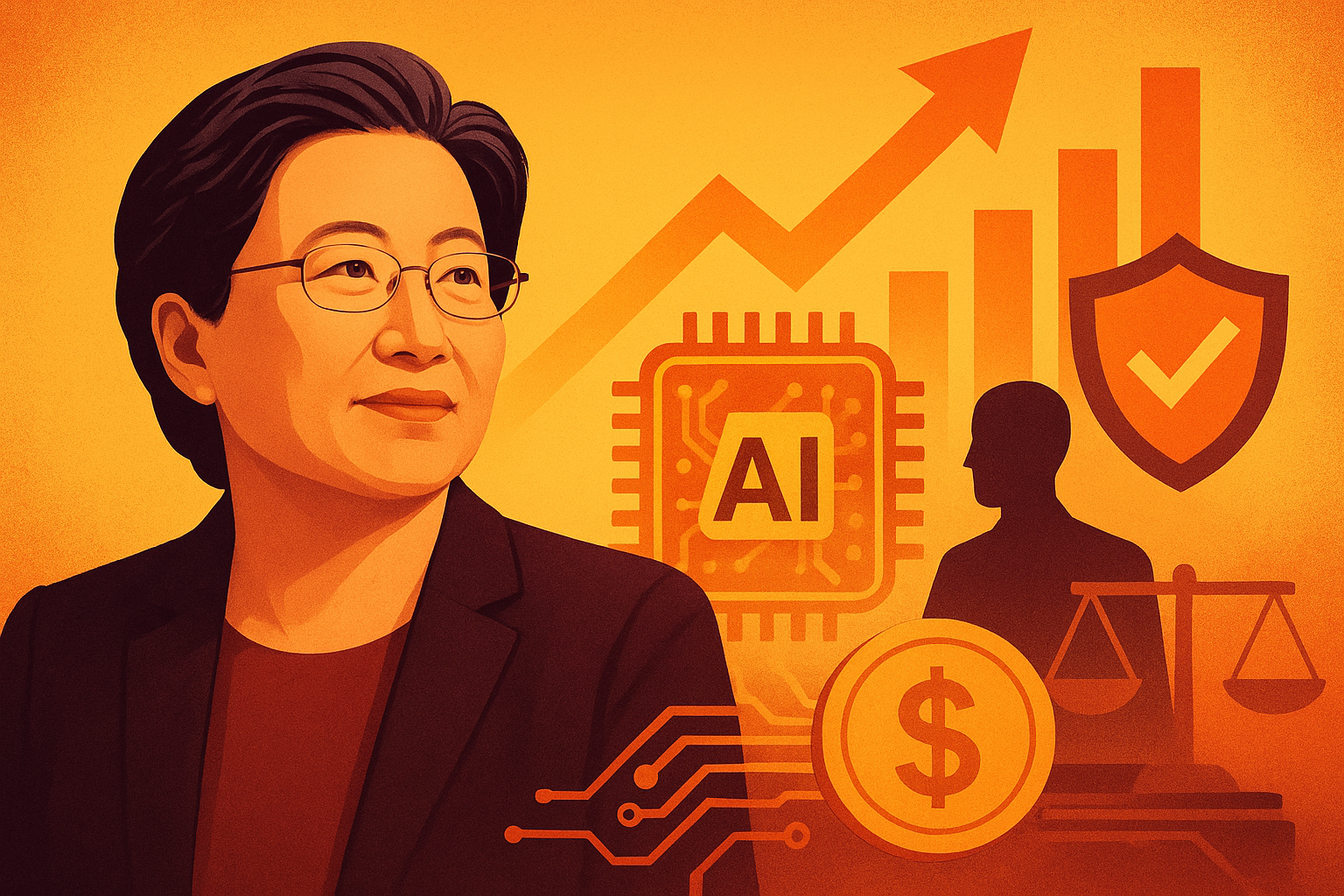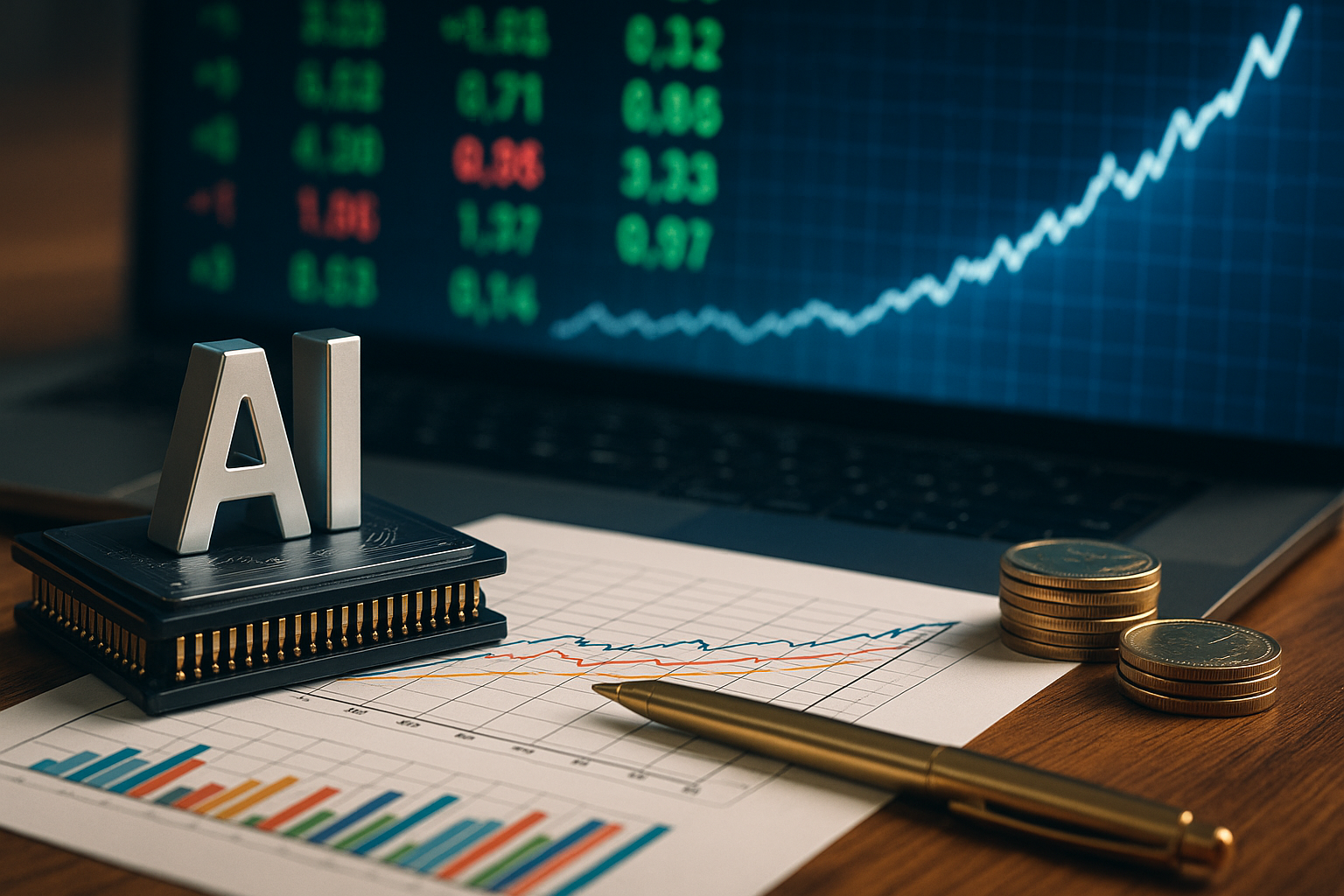The AI boom shows no signs of slowing down—and if AMD’s CEO Lisa Su is correct, we’re only at the very beginning of a transformative decade. Speaking at the Axios AI+ Summit, Su described the industry as being in “year two of a massive ten-year cycle” that will reshape infrastructure, global competition, and capital allocation in ways investors cannot afford to ignore.
Why This Matters Now
Artificial intelligence has dominated 2025’s market narrative, from Wall Street’s trillion-dollar bets on semiconductor companies to Washington’s mounting concerns over tech-driven geopolitical risks. For investors, the momentum behind AI is more than hype—it’s translating into tangible revenue growth, historic capital expenditures, and a reshuffling of the technology landscape.
AMD, long considered a challenger to Nvidia in the AI chip race, has positioned itself as a serious competitor in supplying accelerators for data centers and cloud providers. Su’s prediction that the AI accelerator market could expand to $500 billion within the next 3–4 years underscores just how massive the capital flows may become.
The Bigger Picture for Investors
A $500 Billion Market in Sight
The global AI infrastructure market was valued at roughly $150 billion in 2023, according to McKinsey. If Su’s forecast proves accurate, we’re looking at more than a 3x market expansion by 2028—a scale of growth that would rival some of the largest technology build-outs in modern history.
For comparison, the global smartphone market peaked at around $500 billion after a decade of adoption. AI could reach that milestone in less than half the time. That speed of growth signals both opportunity and risk: while first movers stand to gain enormous returns, late entrants may struggle to secure market share.
U.S. Strengths and Geopolitical Headwinds
Su emphasized the U.S.’s current strengths in semiconductor design, research talent, and innovation ecosystems. However, geopolitical headwinds are intensifying. The Biden administration continues to impose export restrictions on advanced chips to China, while Beijing accelerates domestic development to reduce reliance on U.S. suppliers.
For companies like AMD, Nvidia, and Intel, this creates a dual challenge: tapping into global demand while navigating regulatory barriers and political frictions that can disrupt supply chains and revenue forecasts.
Competitive Landscape: AMD vs. Nvidia
Nvidia remains the clear leader in AI accelerators, with its market cap surpassing $4 trillion earlier this year, fueled by unprecedented demand for its GPUs. AMD, however, has been gaining traction with its MI300 series chips, winning contracts with hyperscale cloud providers like Microsoft and Amazon.
Investors should note that Su’s bullish long-term outlook reflects AMD’s confidence in capturing meaningful market share, positioning itself as more than just a secondary player.
Future Trends to Watch
- Cloud Spending: Hyperscale cloud providers (AWS, Azure, Google Cloud) will continue to drive AI infrastructure investments, shaping demand for accelerators.
- AI Regulation: U.S. and EU efforts to regulate AI applications could impact adoption timelines and spending priorities.
- Capital Expenditure Surge: Major firms, including Alphabet and Meta, have already committed tens of billions in capex this year alone for AI infrastructure. Expect this trend to accelerate.
- Energy and Materials: Building AI infrastructure at this scale will strain energy grids and drive demand for advanced materials like rare earths and specialty metals—opening opportunities in the Metals & Mining sector as well.
Key Investment Insight
Investors should monitor semiconductor suppliers, cloud providers, and infrastructure enablers tied to the AI ecosystem. While Nvidia remains the dominant play, AMD’s growth trajectory and competitive positioning suggest significant upside potential, especially if it captures a meaningful share of the projected $500 billion accelerator market.
Additionally, the AI cycle’s ripple effects will extend into energy, data centers, and raw materials—sectors that could offer second-order opportunities beyond pure semiconductor exposure.
Key Takeaways
Lisa Su’s projection is not just a corporate forecast—it’s a reminder that we may be witnessing one of the most transformative investment cycles of the decade. The AI race will be defined by scale, speed, and strategic positioning across technology, policy, and global competition.
For investors, the message is clear: the AI cycle is just getting started, and those who position early could ride a multi-trillion-dollar wave of growth.
Stay tuned with MoneyNews.Today for daily updates and deeper insights into the trends shaping the future of markets.





